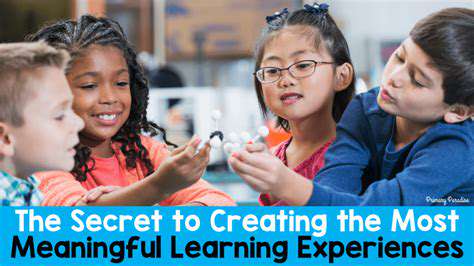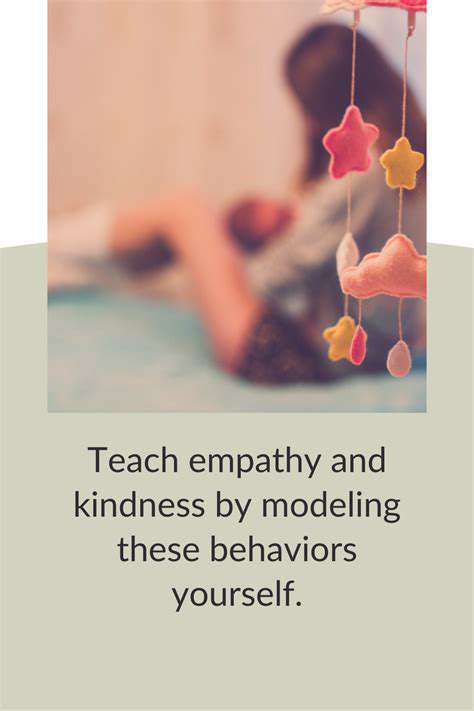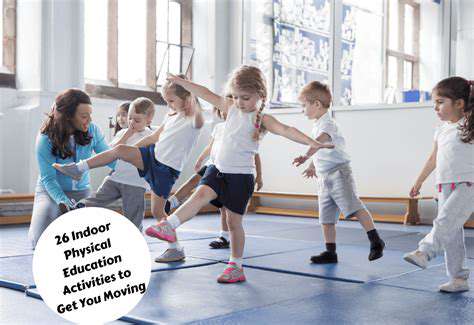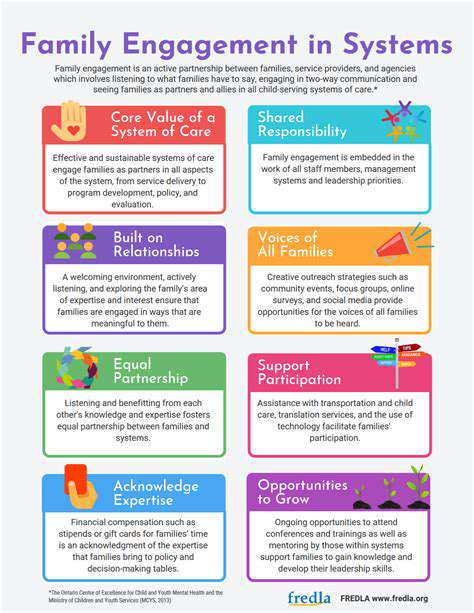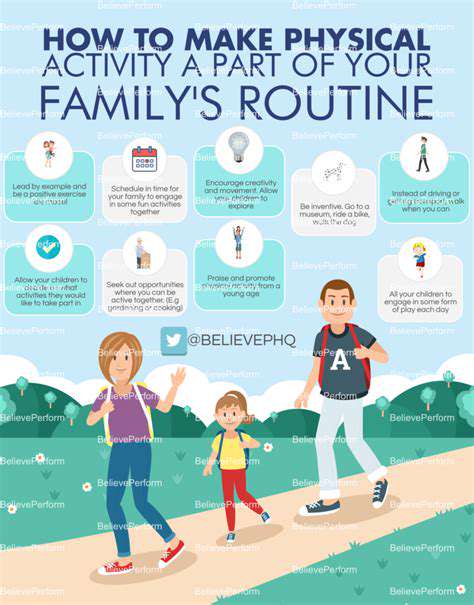The Power of Play: How Play Boosts Early Development
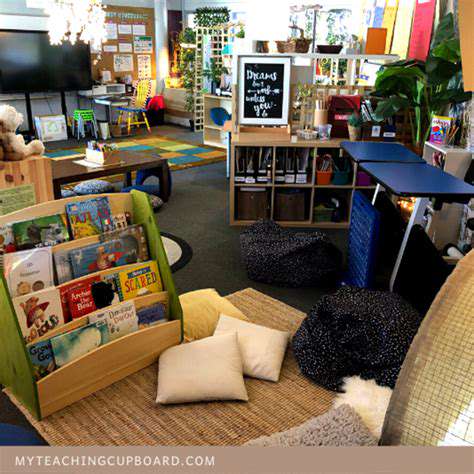
Unleashing Imagination: The Power of Open-Ended Play
Open-ended play, where children are free to explore their creativity and imagination without strict rules or predetermined outcomes, is crucial for their development. This type of play fosters problem-solving skills, critical thinking, and a sense of wonder. It allows children to connect with their inner world and express themselves in unique ways, leading to a deeper understanding of themselves and the world around them.
By providing children with materials that encourage exploration and experimentation, parents and educators can nurture their creativity and imagination. This type of play environment allows for a myriad of possibilities, fostering a love for learning and discovery.
Cultivating Creativity Through Diverse Materials
A wide variety of materials, from natural elements like leaves and rocks to colorful fabrics and recycled items, can spark creativity. Encouraging children to use these materials in innovative ways, without limiting their imagination, is key to unlocking their creative potential. This allows children to develop their own unique perspectives and problem-solving approaches.
The freedom to experiment with different textures, colors, and forms is essential for fostering a child's creative expression. This exploration can lead to unexpected discoveries and breakthroughs in their understanding of the world.
Promoting Social Interaction and Collaboration
Play is not just about individual expression; it's also about social interaction and collaboration. When children engage in collaborative play, they learn important social skills like communication, compromise, and cooperation. This interaction helps them develop empathy and understanding for others.
Working together towards a common goal, whether it's building a fort, enacting a story, or creating an art piece, strengthens social bonds and fosters a sense of community. This type of interaction can significantly impact a child's social and emotional development.
Encouraging Problem-Solving and Critical Thinking
Open-ended play often presents children with challenges that require them to think critically and problem-solve. As they navigate these challenges, they develop essential skills in decision-making, planning, and resourcefulness. These skills are fundamental to success in all aspects of life.
Inspiring Curiosity and a Love for Learning
Play is a natural vehicle for learning and exploration. By providing opportunities for children to explore their environment and engage with materials in their own way, parents and educators can foster a love for learning and a lifelong curiosity. This approach to learning is more effective and enjoyable than traditional methods.
Encouraging children to ask questions, experiment, and discover answers for themselves promotes a deeper understanding and a more profound appreciation for the world around them.
Understanding Developmental Milestones
Play is intrinsically linked to a child's developmental milestones. Different stages of development require different types of play and materials. Understanding these developmental needs allows parents and educators to provide enriching experiences that support their growth and learning.
The Importance of Adult Guidance and Observation
While open-ended play emphasizes freedom, it doesn't mean complete abandonment. Adults can play a crucial role in guiding and observing children's play, offering suggestions, posing questions, and providing encouragement. This support can help children explore their creativity and develop their skills in a supportive environment. By observing children's interactions and interests, adults can gain valuable insights into their developing minds and tailor their approach to best meet their individual needs.
The Long-Term Effects of Playful Learning
The Development of Cognitive Skills
Playful learning environments actively foster the development of crucial cognitive skills. Children engaged in imaginative play, for example, naturally develop problem-solving abilities as they navigate the challenges and conflicts within their games. They learn to strategize, anticipate consequences, and adapt their actions in response to changing circumstances. This dynamic process strengthens their critical thinking skills, allowing them to approach new situations with flexibility and creativity. Furthermore, playful activities often involve memory recall, language development, and spatial reasoning, all of which contribute to a child's overall cognitive growth.
The exploration and experimentation inherent in play encourage children to think outside the box and explore diverse perspectives. This fosters a sense of curiosity and a willingness to engage with new ideas, vital components for future academic success and lifelong learning.
Enhancing Emotional Intelligence
Play provides a safe space for children to express and process their emotions. Through role-playing, children can explore different social scenarios, practice empathy, and understand various emotional responses. This hands-on experience helps them develop emotional intelligence, enabling them to better understand and manage their own feelings and the feelings of others. This foundational skill is essential for building healthy relationships and navigating complex social situations throughout their lives.
Playful interactions also allow children to experience and understand a range of emotions in a non-threatening environment. This understanding fosters emotional resilience, allowing them to cope with challenges and setbacks more effectively.
Boosting Creativity and Imagination
Play is the perfect breeding ground for creativity and imagination. Unstructured play encourages children to explore their own ideas and invent their own rules. Through imaginative play, they can create entire worlds, invent unique characters, and solve problems in unique ways. This exploration fuels their creativity, allowing them to think outside the box and develop innovative solutions.
The freedom to experiment and explore fosters a sense of wonder and curiosity, which is essential for nurturing a creative spirit. This spirit is crucial for problem-solving, critical thinking, and the development of innovative ideas throughout life.
Strengthening Social Skills
Playful interactions provide a dynamic setting for children to develop and refine their social skills. Through cooperative games, children learn to share, negotiate, and compromise. They learn to take turns, follow rules, and resolve conflicts in a constructive manner. These experiences are critical in developing essential social skills that will be invaluable throughout their lives. These skills are crucial for successful teamwork, collaboration, and building positive relationships.
Promoting Physical Development
Play is intrinsically linked to physical development. Active play encourages gross motor skills such as running, jumping, climbing, and throwing. Fine motor skills are also developed through activities such as drawing, building with blocks, and manipulating toys. These physical activities contribute to overall health and well-being, fostering a strong foundation for future physical endeavors. Playful movement encourages physical coordination and strength. It's a crucial component of healthy development.
Long-Term Academic Success
The benefits of playful learning extend far beyond the immediate. Children who experience playful learning environments often demonstrate improved focus, concentration, and engagement in academic settings. The skills developed through play, such as problem-solving, critical thinking, and creativity, translate directly into stronger academic performance. Playful engagement and learning cultivates a love for learning that can last a lifetime. This intrinsic motivation for learning is essential for academic success and future achievements.

